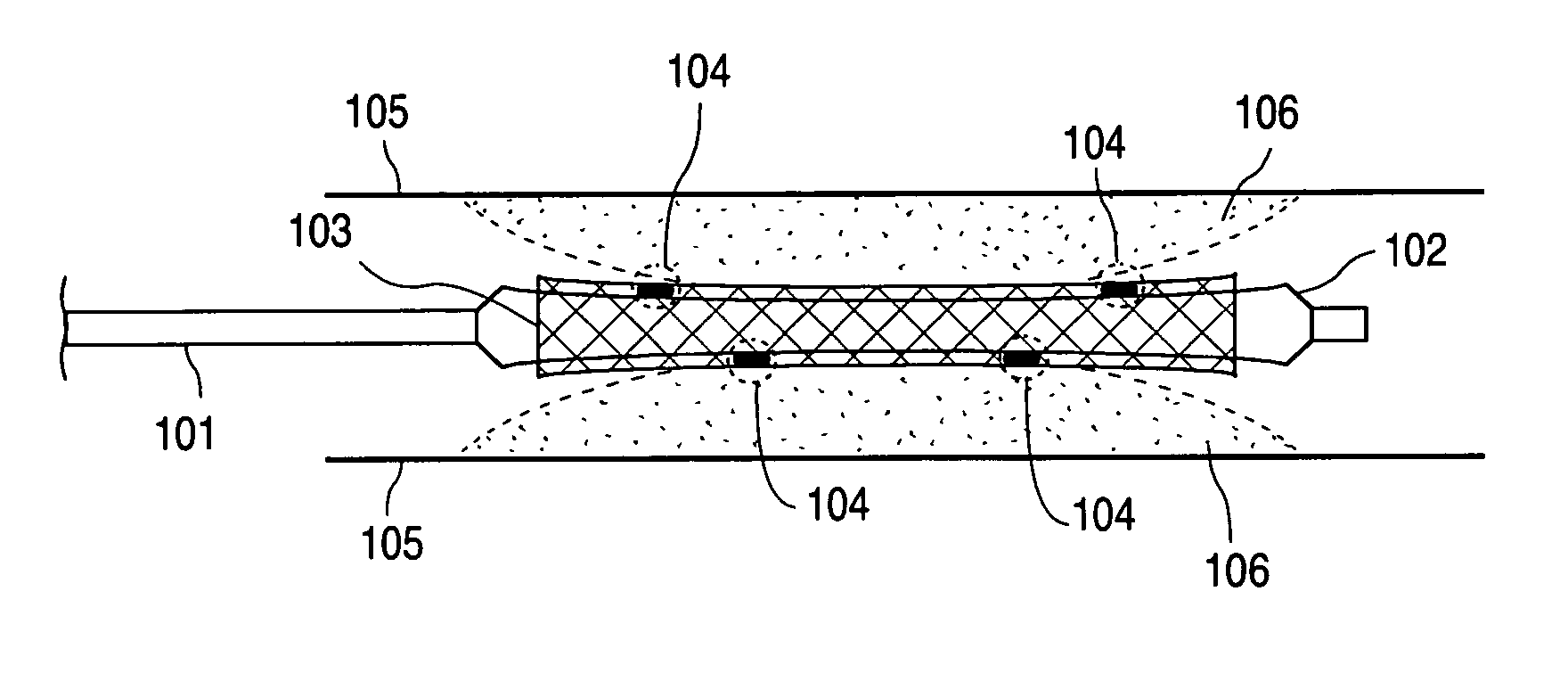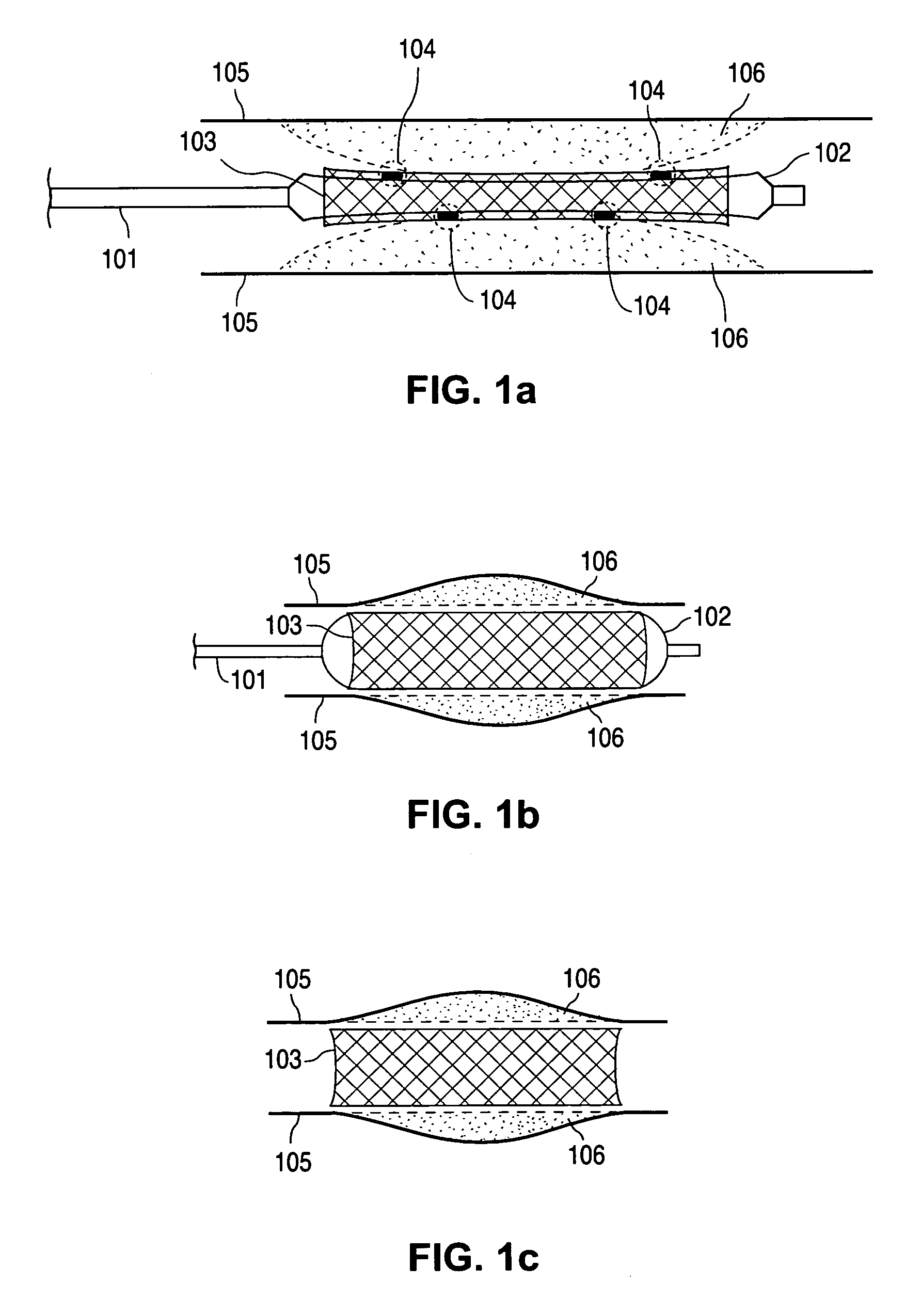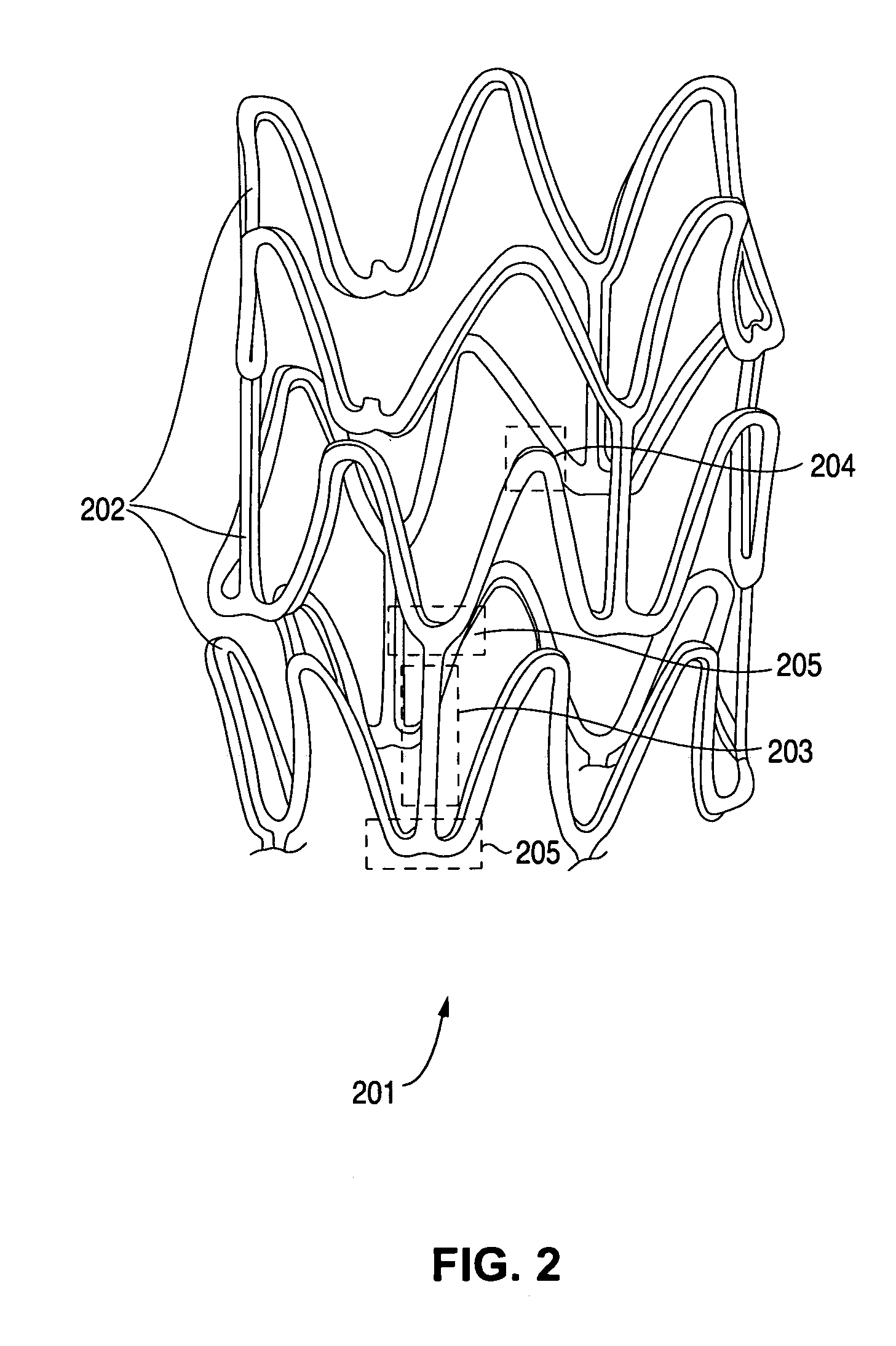Compositions containing fast-leaching plasticizers for improved performance of medical devices
a technology of medical devices and plasticizers, applied in the field of medical implants, can solve the problems of structural failure, structural failure of stents, structural failure, etc., and achieve the effects of reducing the strain-to-failure of polymeric materials, preventing or reducing crack formation, and sufficient rigidity
- Summary
- Abstract
- Description
- Claims
- Application Information
AI Technical Summary
Benefits of technology
Problems solved by technology
Method used
Image
Examples
example 1
[0097]The strain-to-failure of a specimen of a material can be tested using Test Procedure ASTM D882. Specimens used in the testing can be 1″×6″ strips cut from a thin sheet or film for use in this procedure.
[0098]The specimens can be placed in the grips of an Instron Universal Tester and pulled until failure. For the ASTM D882 test procedure, the speed at which a specimen is stressed and the separation of the grip device on the specimen are based on the elongation to break of the material. The elongation and tensile modulus can be calculated from the displacement of the crossheads of the grip device, or with an extensometer. Since the materials of the present invention are used in an organ of a living subject, the materials should be tested at the temperature present in the subject. A thermal chamber can be installed on the Instron Universal Tester. The chamber is designed to allow the test mounts from the base and crosshead of the Instron to pass through the top and bottom of the ...
example 2
[0099]A stent can be formed using standard formation techniques and a plasticizer can then be absorbed by the formed stent. The stent can be formed by first forming a poly(L-lactide) cylindrical tube that is approximately 1.0 inches in length with an outer diameter of approximately 0.053 inches and a wall-thickness of approximately 0.006 inches. The tube can be formed by injection molding. The stent pattern can be cut into the tube using an appropriate laser source.
[0100]The formed stent can then be dipped into acetone for about 15 seconds to allow the poly(L-lactide) material to absorb some acetone, which can serve as the leachable plasticizer during placement of the stent in a subject.
PUM
| Property | Measurement | Unit |
|---|---|---|
| molecular weight | aaaaa | aaaaa |
| diameter | aaaaa | aaaaa |
| diameter | aaaaa | aaaaa |
Abstract
Description
Claims
Application Information
 Login to View More
Login to View More - R&D
- Intellectual Property
- Life Sciences
- Materials
- Tech Scout
- Unparalleled Data Quality
- Higher Quality Content
- 60% Fewer Hallucinations
Browse by: Latest US Patents, China's latest patents, Technical Efficacy Thesaurus, Application Domain, Technology Topic, Popular Technical Reports.
© 2025 PatSnap. All rights reserved.Legal|Privacy policy|Modern Slavery Act Transparency Statement|Sitemap|About US| Contact US: help@patsnap.com



